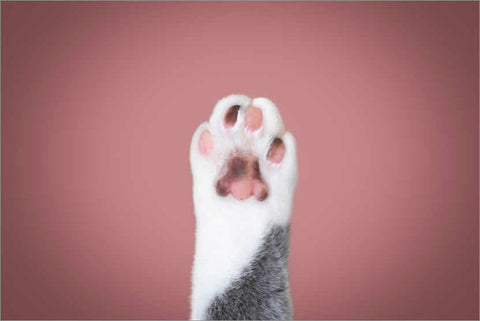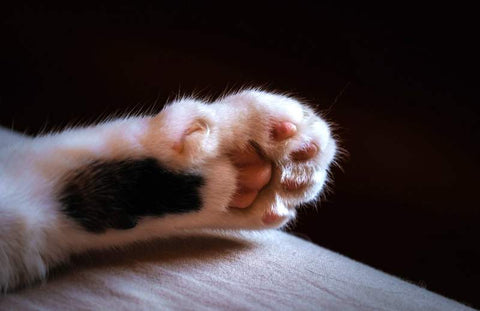
Trimming a cat's claws every few weeks is an important part of maintaining your pet's health. Not only does a quick trim protect you, your pet, and your family, it can also save your sofa, curtains, and other furniture. Nail-trimming is also a fast and effective alternative to declawing, which involves surgical amputation and can cause behavioral and health issues. It sounds ludicrous, but trimming your cat’s nails is possible. If your pet is shredding your furniture, it’s time to consider this option.

When do I need to trim my cat’s claws?
Trimming your cat’s claws sounds like an agonizing experience, but with some patience, can actually save you stress by preventing Kitty from sharping his nails on household furniture. While not generally necessary, you may want to consider investing in nail trimmers if you’ve tried everything and your pet is still shredding your favorite couch.
A cat’s claws are made of two parts: an outer keratinized section composed of nails that your pet cannot feel, and the nail pulp in the center, which contains nerves and blood vessels. Cats naturally sharpen and shed their outer nails, which can sometimes lead to unwanted scratching of household items. If you are hesitant to clip your cat’s claws, try using a repellent spray on your sofa, chair, or other item your pet is clawing first. Nail caps are also available to top Kitty’s claws and preventing him from scratching and damaging furniture. If you have tried all of the above with scratching post to no avail, however, it is time to consider trimming your cat’s claws. Similar to cutting a dog’s nails, clipping your Kitty’s claws involves cutting the hard, sensationless outer layer without cutting too far into the sensitive nail pulp. Cats control whether their nails are extended using tendons and ligaments, however, so you will have to do some extra legwork when trimming Kitty’s claws.
To ease your pet into nail trimming, ensure you are in a quiet room and that your pet is in a relaxed state, such as after a meal. Place your cat on your lap and take his paw into your hand to massage it for a few seconds. If he pulls away, follow his gesture, but do not squeeze or pull his paw. Once he is still, press into the pad of his foot so the nail extends out, then immediately release his foot and reward him with a treat. Keep practicing this on different toes until you and your cat are both comfortable with the exercise. Once your cat allows you to manipulate his paws, you can introduce a pair of nail clippers designed specifically for pets. Let him get accustomed to the sight and sound of the clippers before you try to use them, using treats to make this a positive experience. When you are ready to try trimming, clip only the end of Kitty’s claw, being careful not to cut too far and nick the vein that extends into the center of each nail. Reward your pet with treats and practice patience, as you may only be able to trim one or two nails each sitting when you first begin
It is best to start nail trimming when your cat is young, so he gets used to the process from an early age, but even older cats can learn to have their nails trimmed. Whatever your solution to unwanted clawing, however, remember that outdoor cats need their nails for climbing and self-defense, so do not trim or cap your pet’s nails.
What to Avoid
- Never try to trim your cat’s nails when your cat is upset or when you’re in a bad mood. This makes the process more stressful.
- Never rush a nail trim. You may cut too deep and nick the quick.
- Don’t scold or punish your cat for resisting. This will only make them avoid trimming further.
- Don’t try to trim all your cat’s nails at once.

iPettie: Bring your pet an amazing life.
Info/ Pic:✨online
*We hope to give you better ideas for your pet, but this information is not meant to be a substitute for veterinary care. Always follow the instructions provided by your veterinarian. If your pet feels bad, please take it to the veterinarian in time.
